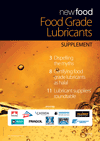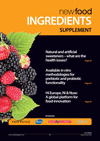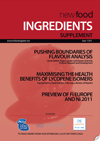Food Grade Lubricants supplement 2013
26 February 2013 | By Dr Hilde Kruse, Helen Bahia, Knuth Lorenzen
Dispelling the myths surrounding food grade lubricants (Sarah Krol, Managing Director, Food Equipment & Nonfood Compounds, NSF International)Certifying food grade lubricants as halal (Kamarul Aznam Kamarozaman, Editor, HalalMedia.net)Food Grade Lubricants Roundtable












